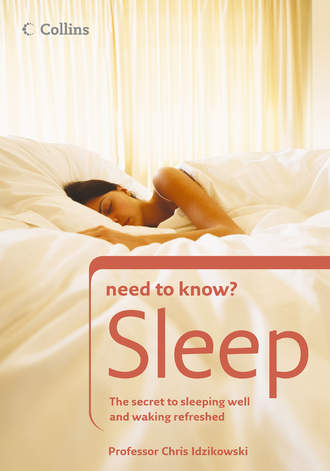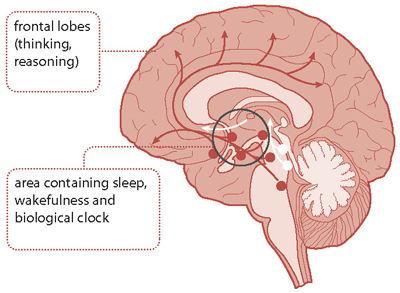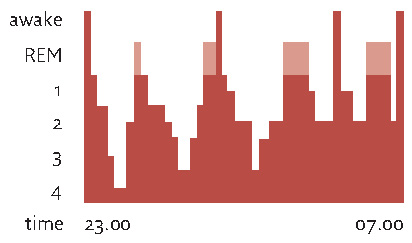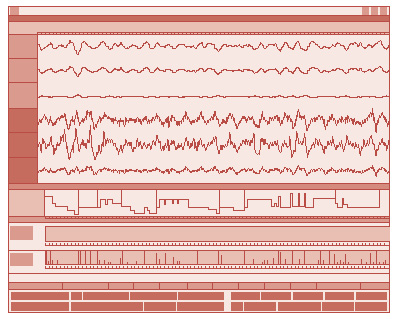
Полная версия
Sleep: The secret to sleeping well and waking refreshed

Collins need to know? Sleep
The secret to sleeping well and waking refreshed
Doctor Chris Idzikowski

Table of Contents
Cover Page
Title Page
Introduction
1 Knowing the basics
2 Why can’t we sleep?
3 Life’s journey
4 How to sleep better
5 Taking control
6 Sleep disorders
7 Sleep medicine
Glossary
Useful addresses
Index
Copyright
About the Publisher
Introduction
Sleep and wakefulness are two sides of the same coin and just about everyone has had a problem with them at one time or another. For many people the difficulties associated with sleep – sleeplessness, sleepiness, tiredness, fatigue – are short-lived and manageable while for others they become chronic and very hard to cope with.
People who need more than the average amount of sleep, say 9-10 hours a day tend to get little sympathy from those who get by on less. The latter, the ‘short’ sleepers, cannot understand why more is necessary to feel, function and look well. They are likely to know what it is like only when they cannot get enough sleep or their sleep is disrupted, such as from long commutes which do not leave much time for work and sleep, illness, jet lag, shift work, caring for others, etc. They have managed so they will wonder why it is not possible for others to cope – of course, they might lack insight because they are themselves chronically sleep-deprived; rather like someone who has drunk a little alcohol and thinks they are performing as well as before. Hence ‘long’ sleepers have a problem, as do ‘average’ sleepers if their sleep is disrupted and they are not getting enough. Those people with sleep disorders such as insomnia, narcolepsy, sleep apnoea (stopping breathing during sleep) or restless legs will be similarly aware that people who don’t have these disorders seem not to care.
Well, this book does care and its aim is not only to help both the sufferers from sleep disorders but also those who want to feel better rested. After all, it has been shown that daytime napping improves mental performance later in the day. The book takes a systematic approach by first exploring what sleep is, its patterns and different stages. This enables readers to understand what their sleep problem is as well as enabling them to work out solutions for themselves. Chapter 2 runs through all those factors that impact on sleep. Sleep varies over our lifetimes and Chapter 3 examines these changes; it helps to understand whether there is a natural process at work or an underlying problem.
Chapter 4 starts to look at solutions that may not necessarily require medical aid or intervention. Chapter 5 delves even deeper and provides some self-assessment procedures that may give an idea of what is causing the sleep problems.
The field of sleep medicine has grown over the last decade or so. In the US it has become a medical speciality. In the UK, on the other hand, expertise runs across a number of specialities, ranging from general practice to respiratory medicine, ENT surgery, psychiatry, neurology and occupational medicine. Sleep medicine has developed in a way that is shared across countries and Chapters 6 and 7 deal with what are now considered sleep disorders and their specific solutions.
Disturbed or shortened sleep not only has an impact on mental performance, both in terms of concentration and increased risk of car accidents, for instance, but it is also associated with diabetes, obesity, heart disease and strokes. Problems with sleep should be tackled and this book shows how to go about this.
1 Knowing the basics
With our 21st-century lifestyles and the everincreasing need to juggle work and family commitments, getting a good night’s sleep has never seemed more important, yet although we spend a third of our lives asleep, research in this area is still relatively new. What really happens when we are asleep? And why is sleep so important? Although much of this fascinating and complex subject remains a mystery, scientists now have some of the answers to these all-important questions.
Understanding sleep
Sleep is essential for our survival and wellbeing. We all know it makes us feel good, alert and able to cope with our waking lives. But why is it so important? What are the benefits of sleep and what happens when we don’t get enough?
must know
Animal sleep
• Sleep is so essential to animals that Nature has made special arrangements to enable it to happen. Horses’ tendons are specially adapted to allow them to sleep standing up; similar adaptations allow South American sloths to sleep upside down, and migratory birds to sleep on the wing. Dolphin brains are so constructed to enable them to swim continuously while breathing (half their forebrain goes to sleep while the other half remains awake).
• The amount of sleep animals need varies according to their size. Elephants sleep for four hours, for instance; rats for 14.
Why sleep?
Sleep is not an optional extra. Like the food we eat and the air we breathe, it is a fundamental need. Sleep is essential for all living beings. Studies on animals have shown that sleep provides a period of enforced quietness in which they can hide from predators, and that sleep exists in all varieties of mammal, irrespective of their size, temperament and habitat.
The generally held view is that sleep energizes and revives, providing us with an enforced time of rest that allows us to recharge our batteries to cope with the everyday business of living. But many scientists argue that to think of sleep entirely in terms of rest is misleading, because it is also an active period when the restoration and repair of body tissue takes place. It is during sleep, for example, that growth hormones are released in developing babies and children.
There is also evidence to suggest that sleep plays a significant role in brain development, and that learning may improve after sleep. In experiments carried out in the UK and USA, subjects who were allowed to sleep after learning new information were found to have a better recall of the data they had learned than those who had not slept.
To most of us, the benefits of sleep are evident from the way we feel after a good night’s rest. But perhaps a better way to understand the role of sleep is to look at what happens when we don’t sleep.
must know
Rest and sleep
Scientists are baffled about the role of rest in sleep, as the amount of energy saved during sleep is only 100 kcal – the same number of calories as in a large piece of toast.
Effects of sleep deprivation
Classic sleep deprivation experiments consist of depriving subjects of one night’s sleep, then asking them to listen to about 1800 bleeps for an hour or so. About 40 of the bleeps are a second shorter than the others, and these are the ones the subjects have to react to. (Most errors of detection generally occur in the last 15 minutes of the task.) Experiments such as this have proved useful to scientists’ understanding of the consequences of lack of sleep. Findings have shown the main short-term effects to be as follows:
• General lack of wellbeing. Lack of sleep can cause fatigue and grogginess.
• Concentration and vigilance. Experiments have invariably shown damaging effects in these areas. People who have been sleep-deprived are more likely to have difficulty taking in information and to make mistakes at work. In real-life situations requiring constant vigilance, such as driving, the dangers are obvious. Statistics show that 20 per cent of all road accidents are caused by fatigue and that many of these accidents will lead to fatalities.
• Memory. Many people complain that they are more forgetful when they do not get enough sleep. This could be down to a concentration problem but it may also be that sleep deprivation makes it more difficult to retrieve information from the brain’s memory store.
must know
Sleep deprivation
• 20-25 hours of sleep deprivation reduces mental performance to the same level as someone with a blood/alcohol concentration of 0.1 per cent, which is greater than the current maximum for legal driving in the UK – 0.08 per cent.
• The US Department of Transportation estimates that 100,000 accidents every year are caused by people feeling fatigued and/or drowsy, and that it leads to 4 per cent of all traffic-related deaths.
• Mood. Lack of sleep can lead to irritability and over-anxiety, which can have damaging effects on your social life, family and other relationships.
• Immunity. Evidence suggests that lack of sleep may affect the immune system. After vaccination, subjects who may have been sleep-deprived have 50 per cent fewer antibodies than those who have slept adequately. Sleep and the immune system are strongly linked; bacterial cell walls can stimulate the sleep centres directly.
• Rational decision-making. Studies show that sleep deprivation can affect general judgement and decision-making abilities, and that people who are sleep-deprived have difficulty in responding to rapidly changing situations. The real-life consequences can be grave. Fatigue is now known to have been a contributory factor in many international disasters such as the nuclear explosion at Chernobyl, the Exxon Valdez oil spill and the Challenger shuttle explosion.
Apart from these common short-term effects of sleep deprivation, there are also long-term consequences. American research suggests that long-term sleep deprivation (defined as interrupted sleep over a period of about a year) may be linked with obesity. Studies carried out at Colombia University have shown that 73 per cent of people who sleep only 2-4 hours a night are more likely to be obese than those who sleep for seven hours. The reason is unclear but it may be because chemicals that play a key role in appetite and weight gain are released during sleep. Other long-term consequences include extreme anxiety, depression, specific sleep-related disorders and even psychosis.
Key turning points in sleep research
Progress in sleep studies changed significantly when it was found that the brain’s activity could be measured objectively. Here is a summary of the main findings that led to this discovery.
• In the 19th century, British researcher Richard Caton measured the brain’s electrical activity by placing sensors on to the scalp’s surface. He noted that the activity was not constant but increases and decreases over time.
• In the late 1920s, German psychiatrist Hans Berger measured brain activity in the belief that it would help him to calculate psychical energy. Largely discredited, he tragically committed suicide. However, his work on measuring the electrical activity of the brain was pivotal in the development of sleep research.
must know
REM and dreams
The discovery in the late 1950s/early 1960s of the connection between REM sleep (see page 20) and dreaming was one of the most exciting in sleep science because it proved without doubt that the brain was active during sleep. The findings marked the beginning of a new impetus in sleep research which lasted through the 1960s, when psychedelia was much in vogue. By the 1970s, interest had declined.
• In 1939, while working at Chicago University, Nathaniel Kleitman – often called ‘the father of sleep’ – published the first major book on sleep, Sleep and Wakefulness (1939). The generally held view of the scientific and medical establishment was that sleep is a passive condition. Kleitman was one of the few people in the world working on sleep at the time.
• In 1953, PhD student Eugene Aserinsky, while working with Kleitman, noted that the eyes move rapidly during sleep, eventually leading to the name of this state as Rapid Eye Movement (REM) sleep. Around this time, William (Bill) Dement joined them and all three were involved in the discovery that subjects awoken out of REM sleep often report dreaming – a turning point in knowing, as opposed to inferring, what goes on in the mind.
How sleep works
Sleep is a highly complicated but ordered process that is controlled by special wakefulness and sleep centres in the brain that work in tandem with hormones and our own internal body clock. The main players in this fascinating process are described below.
must know
24-hour cycle
Most living organisms, plants and animals, live according to a 24-hour cycle that is dominated by light and darkness. Even death can be part of this cycle, with cardiac arrests and strokes occurring mainly between 6 a.m. and 12 noon – perhaps because this is when blood tends to clot most.
Clocks, cycles and rhythms
We are all governed by a 24-hour cycle called a ‘circadian rhythm’, taken from the Latin words circa, meaning ‘around’, and die, meaning ‘day’. Circadian rhythms underpin everything, from hormone production to when we feel like getting up or going to bed. Our body temperature has a 24-hour rhythm too; minimum body temperature usually occurs around 4 a.m., maximum body temperature around 10-11 p.m. Sleep also roughly follows a 24-hour rhythm.
For most of us, a typical cycle means falling asleep between around 11 p.m. and midnight, and waking up between 6 a.m. and 8 a.m., indicating that we are biologically programmed to be able to fall asleep and wake up at around those times. However, not all clocks keep the correct time, and the biological clock is no exception. It generally runs a little ‘slow’ but is kept to the right time relative to light and darkness by ‘synchronizing’ cues called ‘zeitgebers’. Dawn light is one of the most important and well-understood cues that our body responds to, but the onset of darkness (which stimulates the production of melatonin from the pineal gland) also has a role to play. Other zeitgebers are exercise, mealtimes, social interactions, sounds, and possibly changes in temperature. Sleep itself may be a weak zeitgeber.
Sleep and wakefulness
Working with the ebb and flow of the circadian rhythm are special sleep and wakefulness centres, which are located in a part of the brain called the hypothalamus. The sleep centre is in the same region of the brain that controls temperature (which may be why you sometimes can’t sleep if you are too hot) and the wakefulness centre is near the part that is associated with activity. In an ideal world, the sleep centre will shut down during the day, when the wakefulness centre opens, and open at night, when the wakefulness centre closes. Not surprisingly, good sleepers have strong day-time wakefulness and night-time sleep systems. But if these centres have been damaged (through, say, over-use of caffeine, alcohol or drugs, or due to illness or age), you are likely to have sleeping problems.
must know
Sleep vs. wakefulness
The discovery of sleep and wakefulness centres in the brain came about as the result of the spread of a brain disease called Encephalitis lethargica between 1917 and 1928. The disease, characterized by a lethargy that turns its sufferers into living statues, became the subject of the Oliver Sachs book Awakenings (1973).

The brain’s sleep centres
must know
Cues
The brain’s metronome or clock runs slowly. Various cues such as light, exercise and food intake keep it synchronized with day and night.
The brain’s metronome
The suprachiasmatic nucleus (SCN), is the brain’s master biological clock, or metronome. It helps to synchronize sleep with the circadian rhythm, as well as regulating many of the bodily functions that affect sleep, such as hormonal secretion and body temperature. Made up of about 20,000 nerve cells, the SCN is located in the brain’s hypothalamus, just behind the eyes, and is immensely important; if it is destroyed, 24-hour rhythms break down. It keeps time with daylight and is believed to work particularly closely with the wakefulness centre of the brain. Scientists also believe it ‘instructs’ the pineal gland to release melatonin, the hormone that signals the onset of darkness.
In 2002, a group of scientists discovered that the SCN is directly connected to a receptor in the retina sensitive to blue light (light from the sky), which enables the brain to identify whether it is light or dark. In blind people, who have damaged retinas, the SCN does not synchronize with daylight and so their ability to sleep is affected.
The role of melatonin
Melatonin is secreted by the pineal gland in the brain (often known as the ‘third eye’ in reptiles because of its sensitivity to light), and is the hormone that ‘tells’ the brain it is dark. Secretion starts when it gets darker, peaks in the middle of the night and stops at dawn. Melatonin is believed to be an important synchronizer of other circadian rhythms and is closely connected with Seasonal Affective Disorder (SAD) and jet lag.
Seasonal Affective Disorder (SAD)
Seasonal affective disorder, or SAD, is a condition in which people suffer depression, insomnia and lethargy in the winter months – hence its alternative name, ‘winter depression’. Normal circadian rhythms dictate that we get up in the light and go to bed in the dark. This is fine in the summer, but, in the case of SAD sufferers, the lack of light in winter is believed to disrupt their body clock so much that getting up on dark winter mornings proves impossible. The problem is believed to be caused by a disruption in their production levels of melatonin, the hormone which acts as the brain’s and body’s signal for darkness. Melatonin is normally produced at night, but in 80 per cent of SAD sufferers, melatonin levels peak just when it’s time to get up. SAD is often treated with light therapy, in which sufferers are subjected to bright light. The light is believed to block the production of melatonin, which kickstarts and resets the body clock.
The role of serotonin
Serotonin as a precursor of melatonin is one of the brain’s chemical messengers and has a major effect on the way the brain works, specifically affecting mood and sleep. (Other chemicals in this group include noradrenaline, dopamine and histamine.) It is produced in the brain from trytophan, an essential amino acid found in certain foods, and levels in the body are negatively affected by poor diet and stress. Lack of serotonin may lead not only to insomnia, but to anxiety and depression, which are in turn two of the greatest disruptors of sleep. Often known as the ‘feel good’ hormone, serotonin is Nature’s own Prozac, and is a crucial in the way many of the more recent antidepressant drugs, known as Selective Serotonin Re-uptake Inhibitors (SSRIs), work.
did you know?
• Serotonin is one of the oldest brain chemicals around. Serotonin neurones existed in animals that appeared on earth 500 million years ago.
• Women produce up to a third less serotonin than men.
What happens when we sleep
Doctors and scientists can now record the activity of the brain in sleep by means of an electro-encephalogram or EEG. Using EEGs in this way has revolutionized our understanding of sleep.
must know
Deep sleep
• Deep sleep usually occurs during the first three hours and takes up to 20-25 per cent of the night.
• Stage 2, or light sleep, occupies around 50 per cent of the night.
• REM sleep occupies around 25 per cent of the night.
The stages of sleep
In an electro-encephalogram (EEG), electrodes are glued to a person’s scalp and then connected to powerful amplifiers that measure brain activity. Their output used to be printed on paper, but can now be seen on a computer monitor in the form of a graph called a hypnogram, or polysomnograph, which shows the brainwaves emitted during sleep. Eye activity and muscle tone are also recorded.
Using the EEG in this way has shown that people have two different kinds of sleep: non-REM (Rapid Eye Movement) sleep and REM, or dreaming, sleep, and that they go through five different stages within these two main types: Stage 1 (drowsiness), Stage 2 (light sleep), Stages 3 and 4 (deep sleep, sometimes called delta or slow-wave sleep) and Stage 5 (also known as REM sleep).
Stage 1: drowsiness
This is a short transitional stage, lasting only about 10-15 minutes. Your brainwaves will start to slow down from the normal ‘alpha rhythm’ measurement of 8-12 cycles per second, your muscles will start to relax and your eyes begin to roll. Polysomnographs taken at this stage show a 50 per cent reduction in activity compared to when awake. Although your eyes will be closed, if you are aroused from sleep at this stage you may feel as if you have not slept at all.

Hypnogram

Set of traces
Stage 2: light sleep
As you descend further into sleep, the relaxed alpha rhythm is replaced by a faster wave form of 12-14 cycles per second called a ‘sleep spindle’ (because of the spindle shape it makes on the computer screen). At this point the systems that maintain wakefulness are letting go and the sleep-promoting systems are switching on. This stage usually lasts 30-40 minutes.


